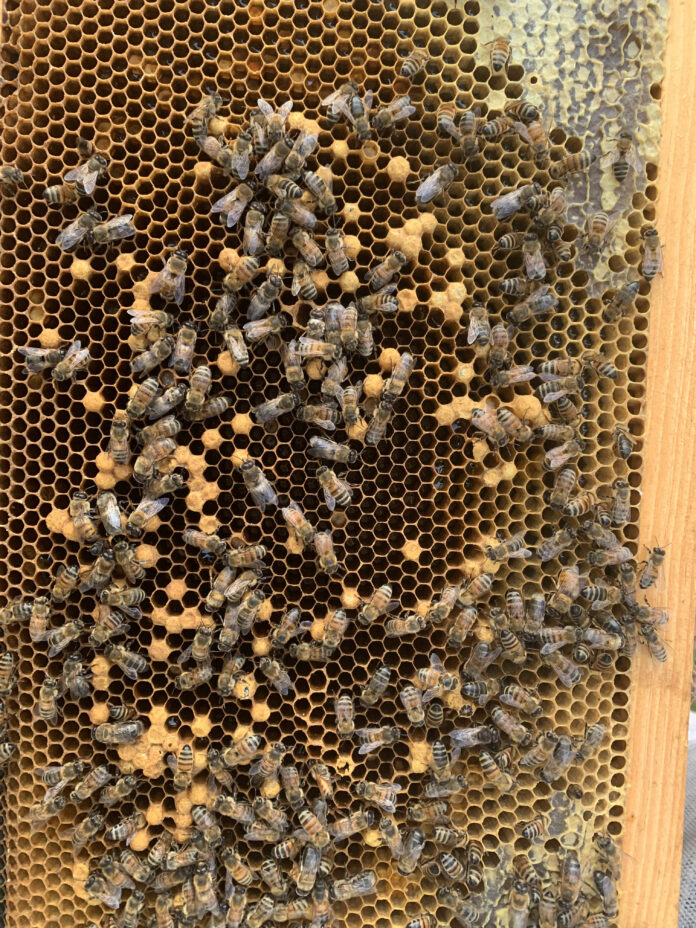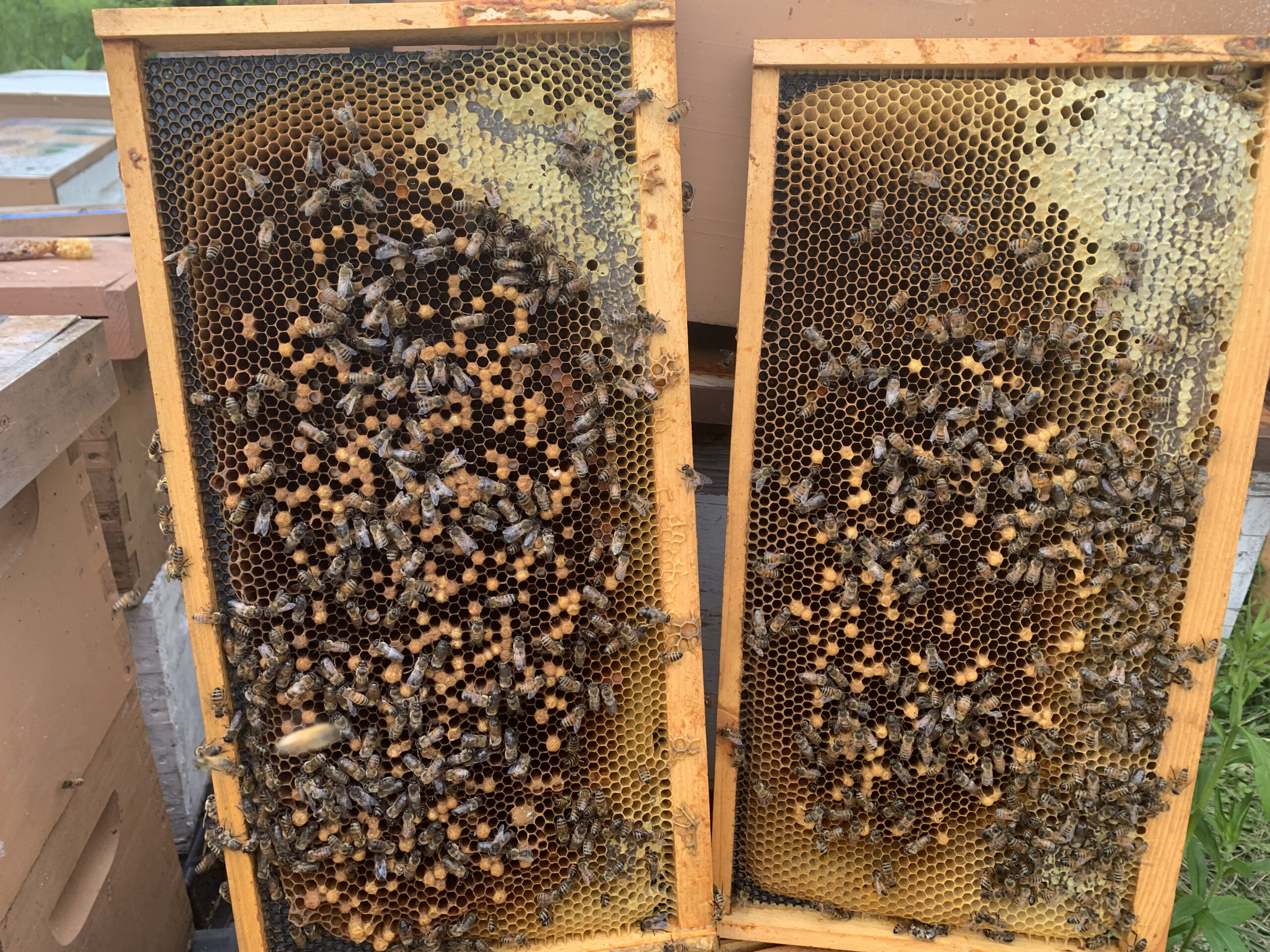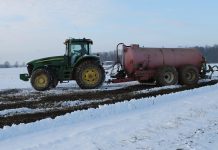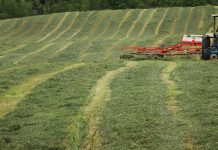
A hive that has lost its queen through swarming, operator error (crushed, dropped, or fell on the ground) or supersedure over time will eventually evolve into what I call a “droney hive.”
The worker bees need eggs or less than 4-day-old larvae available to make a queen cell to produce a new queen. After the last capped brood hatches out, and if the hive is still queenless, the pheromones that are produced from the open brood and the pheromones from the queen are no longer present in the hive.
These pheromones stop the workers from developing ovaries and becoming functional. This may take up to a week or more, depending on the conditions of the hive, but without any young brood or eggs available, the hive will become “droney”.
What is often thought of as one worker bee becoming a laying worker is actually multiple worker bees developing ovaries and starting to lay eggs in the comb. The laying workers’ abdomens are much shorter than the queen’s abdomen and they cannot reach down to the bottom of the cell. Thus, many eggs will be sideways or clustered in the cells in haphazard patterns.
The laying workers will not have a tight, uniform pattern of a queen and will deposit eggs all over various frames. If you see many cells with multiple eggs, there is a high probability it is droney.
I say high probability because you will run into a newly mated queen that sometimes will throw a few eggs just starting to lay in a single cell. Another way to verify laying workers is to look at the frame not vertically as you normally hold the frame, but horizontally to see if the cells have been slightly enlarged to fit the larger developing larvae that are developing into drones. All laying workers’ eggs will develop into drones because they are from unfertilized eggs.
It was once thought that one of the steps to get rid of the laying workers in your hive was to take the entire hive out a distance away and shake all the bees off the frames and return the box to the original location. The foragers would return but the laying workers with the swollen abdomen were incapable of flying back to the location.
I tried this method years ago and went as far as going about four rows deep into a cornfield that was over head high to shake out my bees, leaving the laying workers to almost certain death. I then added a frame of brood later and checked on them after another week. The result was that either the laying workers had killed the developing queen cells or the remaining workers did not make the queen cells because they believed they were “queenright” and didn’t need to make a new queen.

It was only years later that I learned researchers Sakagami (1959) and Hoffman (1961) reported that in a colony of laying workers, age-related activities resembled those in normal colonies. The laying workers participated in all activities of the hive, eating pollen and honey and flying out. The mystery of who the laying workers are thickens.
Your first step is identifying, understanding and admitting you have a problem. The next step short of burning them or selling them to a new beekeeper is more ethical and easier. For a tried and true method — after you have read your Farm and Dairy weekly edition, which happens to be a great Father’s Day gift that’s more practical than the Jelly of the Month Club and is now on sale for 52 issues as low as $33.95 — place two sheets across the top frames of a queenright colony. Take your pocket knife and cut slits through the paper between a few of the frames to create small openings.
Now, place your droney deep or hive over top of the queen right hive to combine the two hives. You can offset the deep droney to create a new entrance or place a shim between the outer lid to create a new entrance for the droney hive. The bees will eventually chew through and discard all the paper in a few weeks.
The lower queenright hive will merge with the droney hive and they will repair the droney cells from the laying workers. I have never seen research on what happens to the laying workers, whether they are killed by the stronger hive or just revert back to a worker bee, or are timed out due to longevity.
Another method is to introduce a mated queen into the hive and leave her in the cage for a few days. I have had more success with adding a frame of open brood with the queen, which allows more nurse bees to feed the queen, and also the added open brood pheromones to disrupt the laying workers. In three days, release the queen and make sure you inspect the open brood to kill any new queen cells that may be there. You don’t want a new queen cell to compete with your new queen. She may swarm out or be killed by the workers if not accepted.
If you can’t find your queen or fresh eggs and larvae upon inspection, add a frame of some open brood and check back in a few days. If your hive is queenless, they will draw out the new queen cell quickly to stop the hive from going droney.












